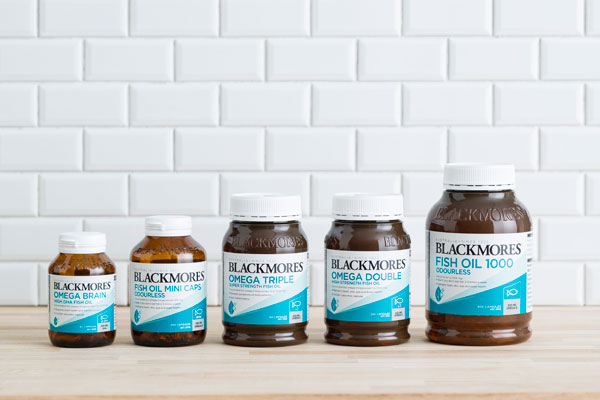Fish oil is a source of omega-3 fatty acids, a type of polyunsaturated fat that supports general health and wellbeing.
As the name suggests, fish oil is found in and sourced from fish, but some varieties of fish contain larger amounts of the healthy fat than others.
Fish oil provides some important health benefits. So how much should you aim to eat each day, and what are the best sources?
What are the benefits of fish oil?
EPA and DHA are omega-3 fatty acids that are found in fish oil. Consuming these regularly supports heart and cardiovascular health, maintains healthy eye function, and reduces mild joint inflammation and reduces the symptoms of mild arthritis.
It also helps to maintain healthy blood fats, supports brain health, and cognitive function.
Plus, ensuring an adequate intake of omega-3 DHA during pregnancy is important for the normal development of baby’s brain, nervous system and eyesight.
The body does not produce omega-3, we get them from the foods we eat, mainly fish. If you don’t eat fish 2-3 times a week,
fish oil supplements are another rich source of omega-3.
How can I source vegetarian omega-3 fatty acids?
Omega-3s are also found in plant-based fats and oils, such as canola and soybean oil, linseeds,
chia seeds and walnuts, but they’re slightly different to the variety that fish oil contains.
These plant-sourced omega-3s are known as ALA, and while they should also be included as part of a healthy well-balanced diet, it’s the EPA and DHA that fish oil contains that provides the most health benefits.
Our bodies can convert some of the ALA, or plant-sourced omega-3s into the more beneficial form found in marine sources, but the conversion rate is low.
How much omega-3 do you need?
According to the experts as much as 80 percent of Australians aren’t eating or consuming enough fish oil – or at least, not enough to enjoy its health benefits.
The amount of omega-3s required depends on the health benefit.
As a guide, children aged between two and three years ideally need at least 40mg a day, rising to 55mg a day for four- to eight-year-olds. For teenagers, between 70 to 125mg a day is optimal, according to their age and gender.
For adults, the
Heart Foundation recommends consuming between 250 and 500mg of EPA and DHA every day – or in other words, between 1750 to 3500mg per week.
You can achieve this by eating two to three serves of oily fish every week, and supplementing your intake with fish oil supplements.
However, to help maintain healthy blood fats consume about 900 mg of omega-3s and to relieve mild joint inflammation consumption of 2700 mg per day is necessary.
It is possible, although difficult, to consume too many omega-3 fatty acids, and the upper level of intake is set at 3000mg per day.



